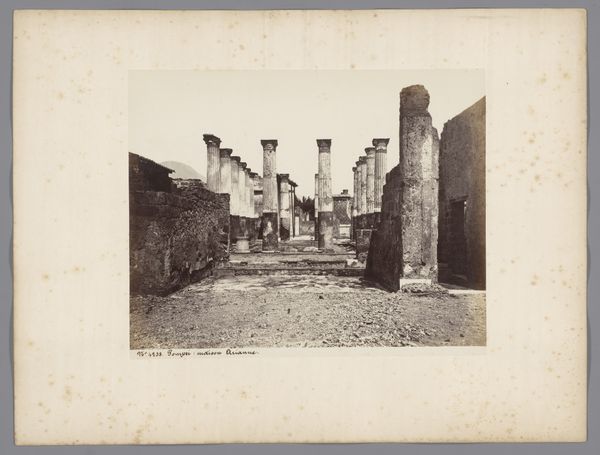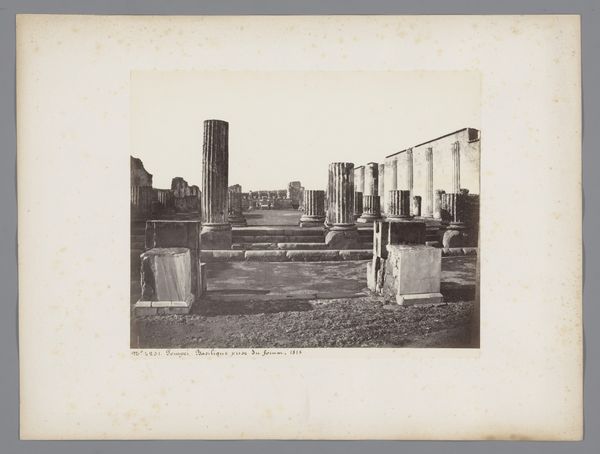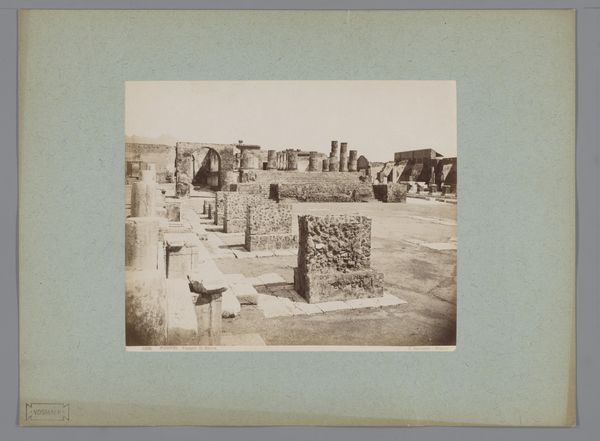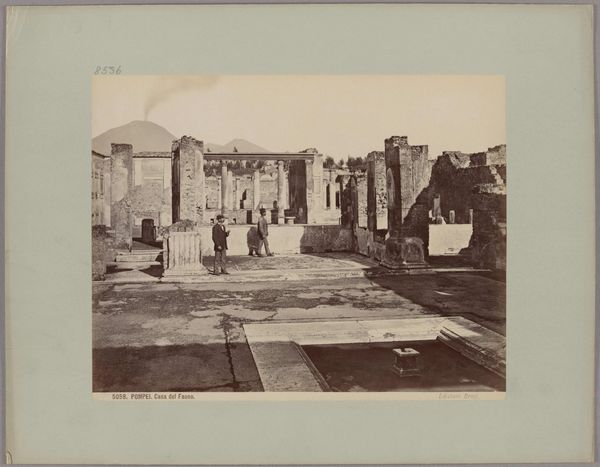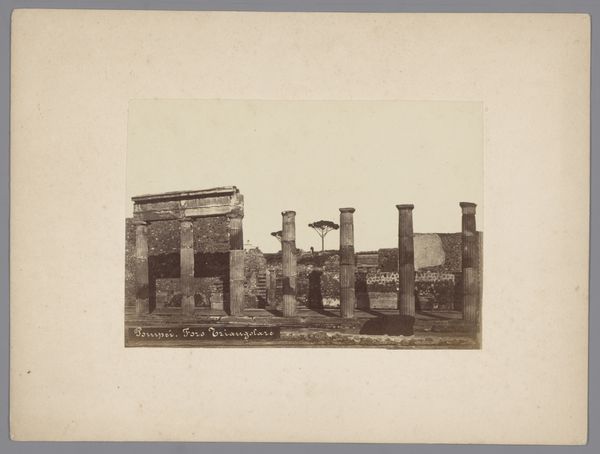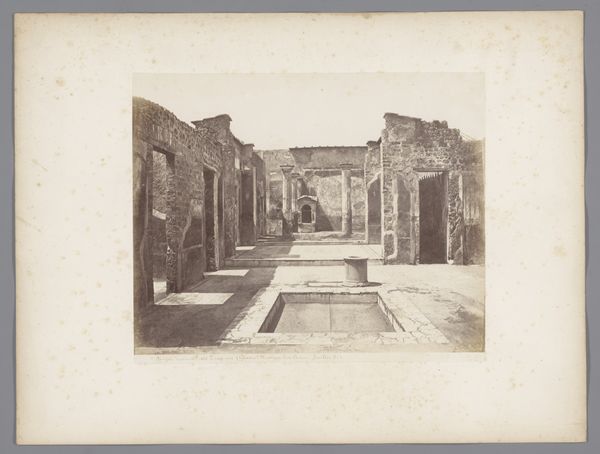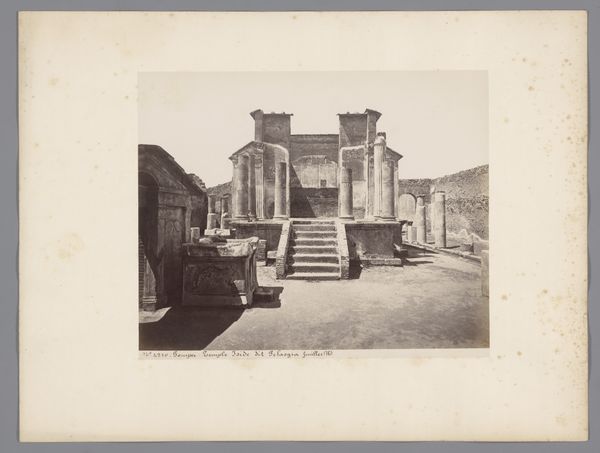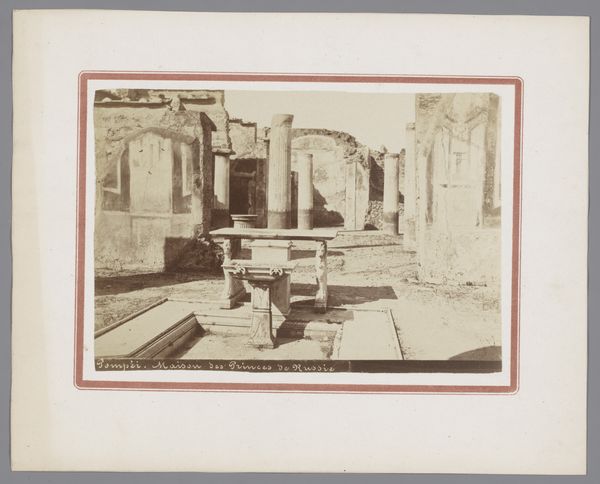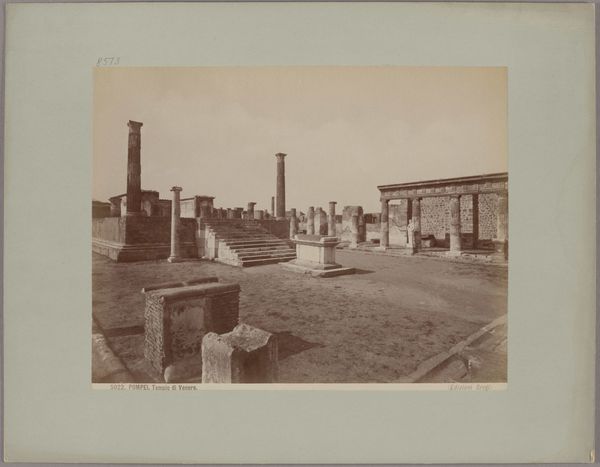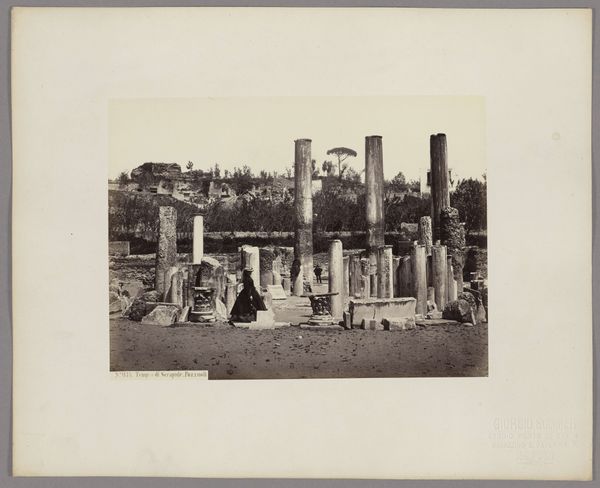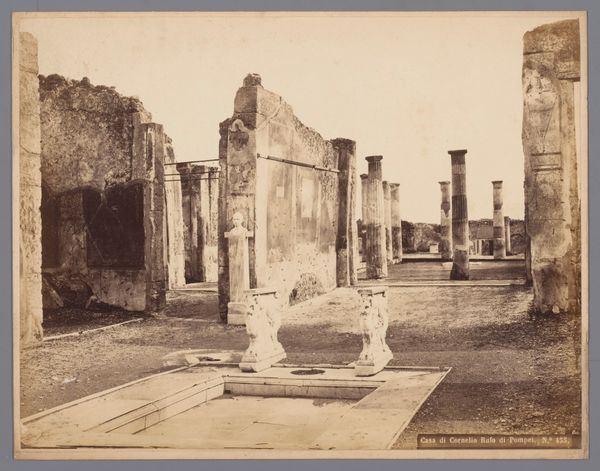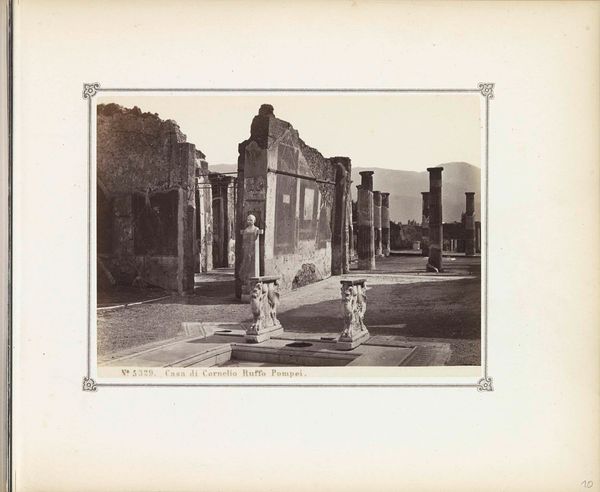
photography, site-specific
#
greek-and-roman-art
#
landscape
#
photography
#
ancient-mediterranean
#
site-specific
Dimensions: height 202 mm, width 253 mm, height 253 mm, width 355 mm
Copyright: Rijks Museum: Open Domain
Curator: The Giacomo Brogi photograph "Restanten van de Isistempel te Pompeï", dating from between 1864 and 1881, offers a striking view into the past, doesn't it? Editor: Absolutely. My first impression is the weight of history here. The stillness is almost overwhelming—like the earth itself is holding its breath. Curator: Brogi, as part of his larger documentation of Italian cultural sites, presents not just ruins, but a complex tableau of power, religion, and daily life abruptly halted by the eruption. It makes you wonder about the cult of Isis, quite prominent in Pompeii at the time. Editor: It really does. It makes you think about what was actually there, not what remains. The image also highlights how cultural encounters of the time played out in both the ancient world and Brogi's present moment. Roman appropriation of Egyptian religion! Curator: Indeed! It invites speculation about identity and faith back then. Think about how the presence of the Temple reveals connections and religious exchange within the Mediterranean world, and what that meant within broader hierarchies. Editor: Yes, and in looking at this image now, we must consider how this form of preservation impacted the inhabitants who unearthed this. A form of cultural imperialism in photography? Curator: Absolutely! And to view Brogi's work through today's lens – we can interrogate our fascination with such imagery. There’s so much to be read between the stark tones of the print. Editor: Precisely. Examining photographs such as this through a critical historical perspective gives a better view of past eras and an awareness of modern structures that remain hidden today. Curator: Brogi's careful composition urges us to consider what narratives we prioritize in the remnants of history and reflect on whose stories are not being told, even within this captured space. Editor: Exactly. The photograph acts as a point of departure, enabling us to critically discuss themes surrounding imagery, its influence, and lasting implications for our comprehension.
Comments
No comments
Be the first to comment and join the conversation on the ultimate creative platform.

